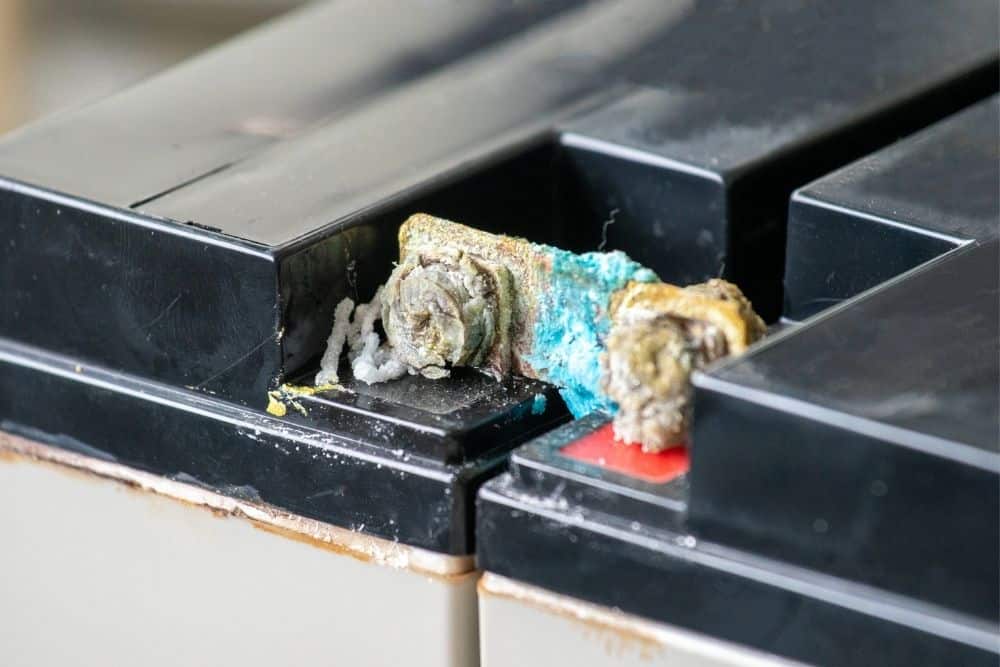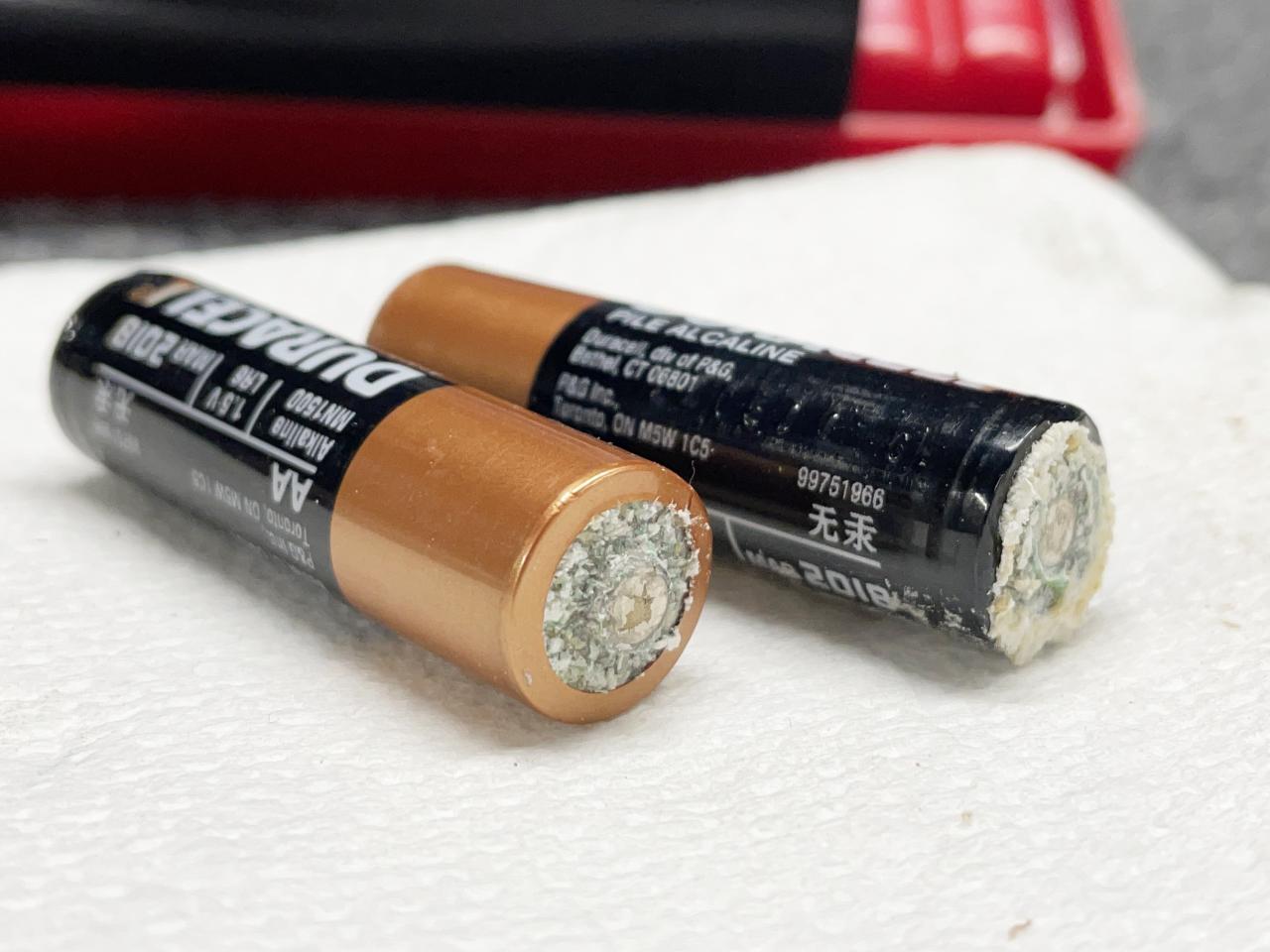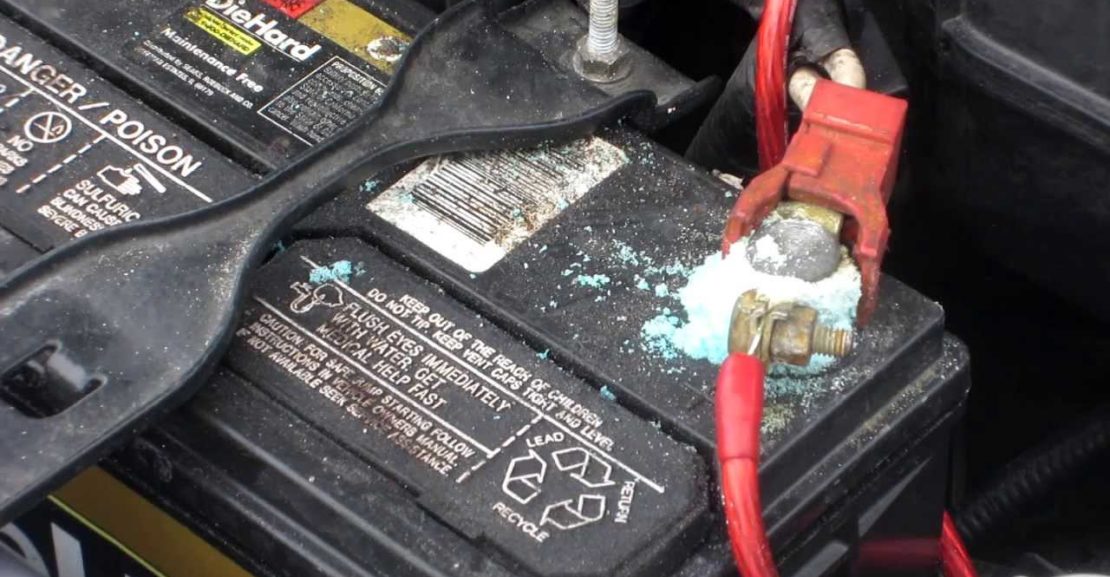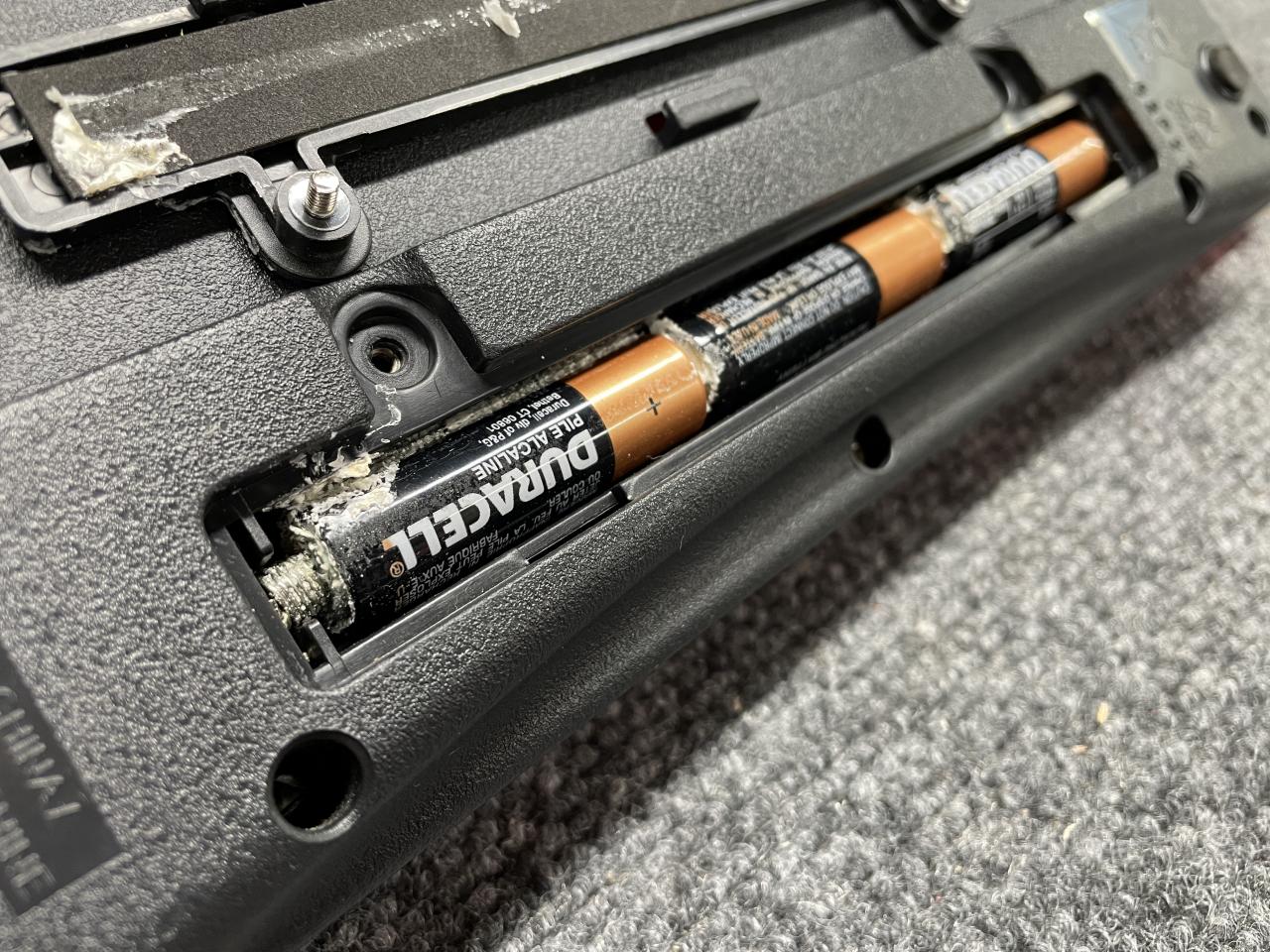Why Does Corrosion Form On Battery Terminals
Why Does Corrosion Form On Battery Terminals - The substance can be either greenish blue or white depending on the type of metal of the terminal ends. When the battery acid interacts with the metal terminals, corrosion ensues. Corrosion typically looks like a flaky layer of brown, white, or green discoloration that. Corrosion can also be triggered by the chemical reactions of the electrolyte with the battery’s copper clamps. By jacky july 10, 2023. There are several reasons corrosion can appear on your battery. Corrosion reduces the battery efficiency and lowers the batteries useful life. This leads to an occurrence of a corrosive environment. White sulfur crystals form on the negative battery terminal or occasionally around the battery itself if it’s leaking. The presence of corrosion is distinguished by the presence of a powdery substance at the terminal that may be greenish, blueish, or white depending on the metal used to make the battery terminal.
Web hydrogen or electrolyte leakage from the battery is the most prevalent cause of battery terminal corrosion. Corrosion typically looks like a flaky layer of brown, white, or green discoloration that. Web what causes battery corrosion? This leads to an occurrence of a corrosive environment. Generally, if the corrosion is occurring on the negative terminal, your system is probably undercharging. Hydrogen gas, which is naturally released from the battery may also allow the acidic. The corrosion occurs mostly in lead acid batteries. Web the most prevalent cause of battery corrosion is a chemical interaction between the battery acid and the metal terminals. Web corrosion on the negative terminal indicates a battery that is being undercharged. Web most often, corrosion of battery terminals is caused by hydrogen gas inside the battery that comes into contact with moisture along with minerals and salts in the air.
Web battery corrosion in the terminals occurs when sulfuric acid fumes react with the metal making the battery terminal. Some batteries are refillable and rely on. Corrosion can also be triggered by the chemical reactions of the electrolyte with the battery’s copper clamps. They can prevent the battery from fulling charging, drain the battery (resulting in your car not starting), and can also cause major damage to the alternator. Web what is battery corrosion? The substance can be either greenish blue or white depending on the type of metal of the terminal ends. It mixes with other things in the atmosphere under the hood and produces the corrosion you see on the terminals. Web corrosion on the negative terminal indicates a battery that is being undercharged. When the battery acid interacts with the metal terminals, corrosion ensues. Some of the main causes include:
Why Is There Corrosion on My Car Battery? The Family Handyman
This occurs when a battery isn’t regularly recharged, either because it’s only being driven for short trips or because it’s getting old. White sulfur crystals form on the negative battery terminal or occasionally around the battery itself if it’s leaking. Corrosion usually appears on your battery terminals as a flaky coating of brown, white, or green discolouration. Web the most.
Corrosion classes what are they, and how do they affect your property
Generally, if the corrosion is occurring on the negative terminal, your system is probably undercharging. This leads to an occurrence of a corrosive environment. It mixes with other things in the atmosphere under the hood and produces the corrosion you see on the terminals. Some of the main causes include: If the substance is greenish blue, its copper sulfate.
Battery Terminal Corrosion Why it happens & How to fix it
They can prevent the battery from fulling charging, drain the battery (resulting in your car not starting), and can also cause major damage to the alternator. In addition, chlorides and sulfates are common corrosion agents that may cause your battery terminals to corrode. It mixes with other things in the atmosphere under the hood and produces the corrosion you see.
Why Is My Trolling Motor Losing Power? Anchor Travel
They can prevent the battery from fulling charging, drain the battery (resulting in your car not starting), and can also cause major damage to the alternator. When your battery runs, hydrogen gas gets released and is mixed with other elements, which can cause corrosion to build up. Web battery terminal corrosion occurs as a result of oxidation. Web what causes.
Battery Terminal Corrosion Causes & How to Prevent it Mechanic Base
In addition, chlorides and sulfates are common corrosion agents that may cause your battery terminals to corrode. Web the most prevalent cause of battery corrosion is a chemical interaction between the battery acid and the metal terminals. Web what causes battery terminal corrosion? Web when you see corrosion on the positive terminal, this means the battery may be overcharging. Corrosion.
Is Corrosion A Sign Of A Bad Battery?? AutoacService
This occurs when a battery isn’t regularly recharged, either because it’s only being driven for short trips or because it’s getting old. When your battery runs, hydrogen gas gets released and is mixed with other elements, which can cause corrosion to build up. Web when you see corrosion on the positive terminal, this means the battery may be overcharging. The.
What Causes Car Battery Corrosion and How Do I Clean It? McKull
Web so, corrosion is an electrochemical process in which an external agent, whether air, water, or another metal, reacts with the surface of a metal. Excess heat from the battery or charger. Web the most common cause of battery corrosion is from electrolyte or electrolyte vapors emitting from the top of the battery. The corrosion occurs mostly in lead acid.
How to Clean Battery Corrosion Safely HGTV
Some of the main causes include: The substance can be either greenish blue or white depending on the type of metal of the terminal ends. Some batteries are refillable and rely on. Web most often, corrosion of battery terminals is caused by hydrogen gas inside the battery that comes into contact with moisture along with minerals and salts in the.
Battery Terminal Corrosion Sign And Solution Spot Dem
Corrosion reduces the battery efficiency and lowers the batteries useful life. Web when you see corrosion on the positive terminal, this means the battery may be overcharging. Corrosion can also be triggered by the chemical reactions of the electrolyte with the battery’s copper clamps. White sulfur crystals form on the negative battery terminal or occasionally around the battery itself if.
How to Clean Battery Corrosion HGTV
The substance can be either greenish blue or white depending on the type of metal of the terminal ends. Some of the main causes include: White sulfur crystals form on the negative battery terminal or occasionally around the battery itself if it’s leaking. Corrosion can also be triggered by the chemical reactions of the electrolyte with the battery’s copper clamps..
When The Battery Acid Interacts With The Metal Terminals, Corrosion Ensues.
If the substance is greenish blue, its copper sulfate. Hydrogen gas, which is naturally released from the battery may also allow the acidic. The fumes including sulfur dioxide so 4 and hydrogen gas will react with copper or aluminum posts to produce corrosion. Web corroded battery terminals can cause several problems with your car.
Web The Most Common Cause Of Battery Corrosion Is From Electrolyte Or Electrolyte Vapors Emitting From The Top Of The Battery.
Excess heat from the battery or charger. Web finally, some batteries corrode because of something called “sulfation.”. Web corrosion on the negative terminal indicates a battery that is being undercharged. Web the most prevalent cause of battery corrosion is a chemical interaction between the battery acid and the metal terminals.
The Substance Can Be Either Greenish Blue Or White Depending On The Type Of Metal Of The Terminal Ends.
White sulfur crystals form on the negative battery terminal or occasionally around the battery itself if it’s leaking. Web so, corrosion is an electrochemical process in which an external agent, whether air, water, or another metal, reacts with the surface of a metal. Hydrogen gas is released by the battery when it is being charged. Web battery corrosion in the terminals occurs when sulfuric acid fumes react with the metal making the battery terminal.
They Can Prevent The Battery From Fulling Charging, Drain The Battery (Resulting In Your Car Not Starting), And Can Also Cause Major Damage To The Alternator.
When your battery runs, hydrogen gas gets released and is mixed with other elements, which can cause corrosion to build up. Web when you see corrosion on the positive terminal, this means the battery may be overcharging. The presence of corrosion is distinguished by the presence of a powdery substance at the terminal that may be greenish, blueish, or white depending on the metal used to make the battery terminal. Corrosion reduces the battery efficiency and lowers the batteries useful life.









